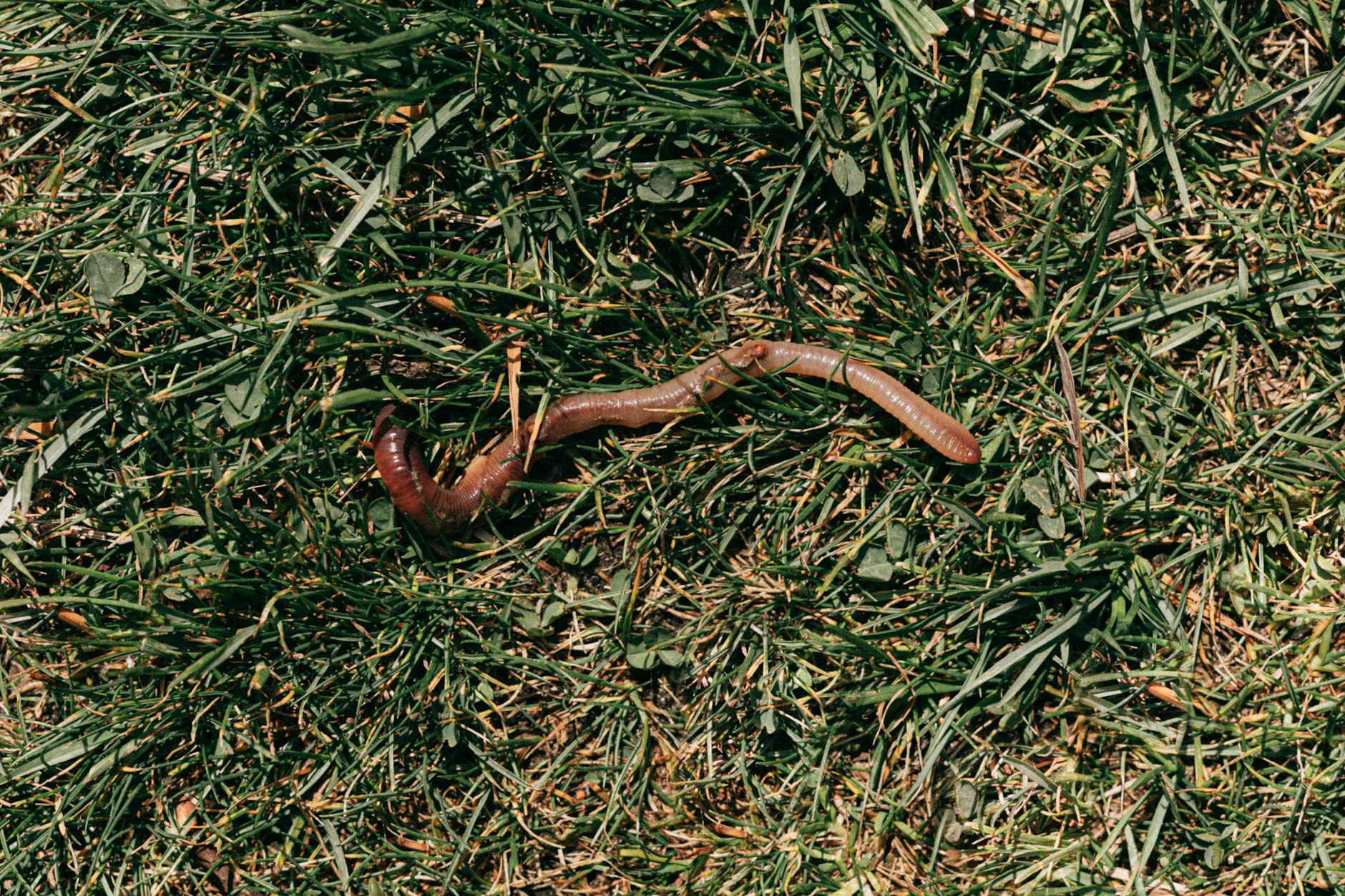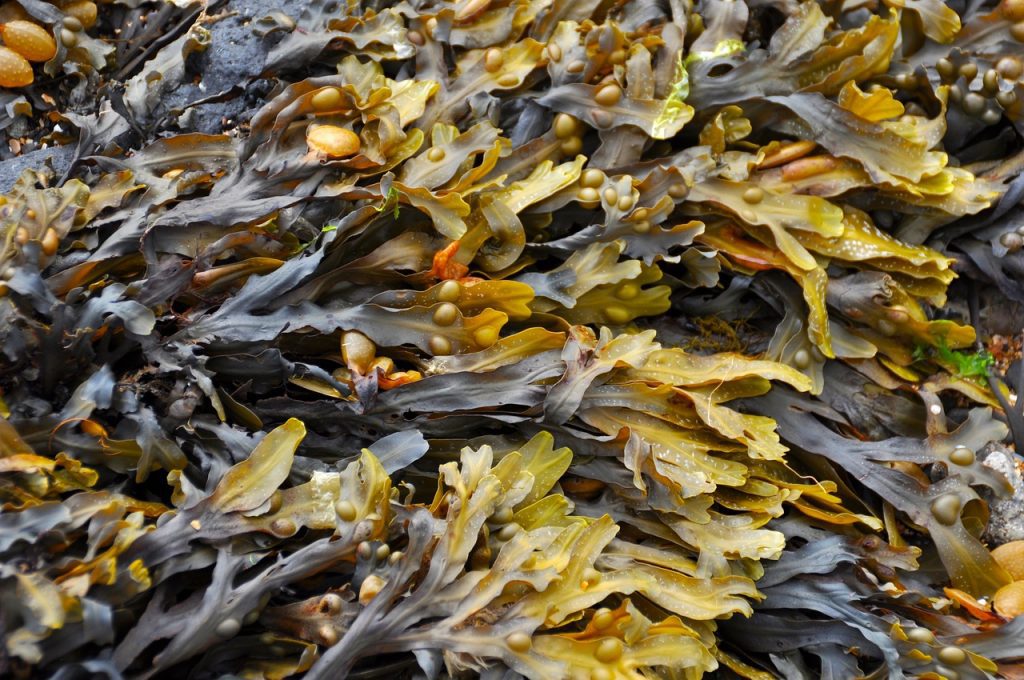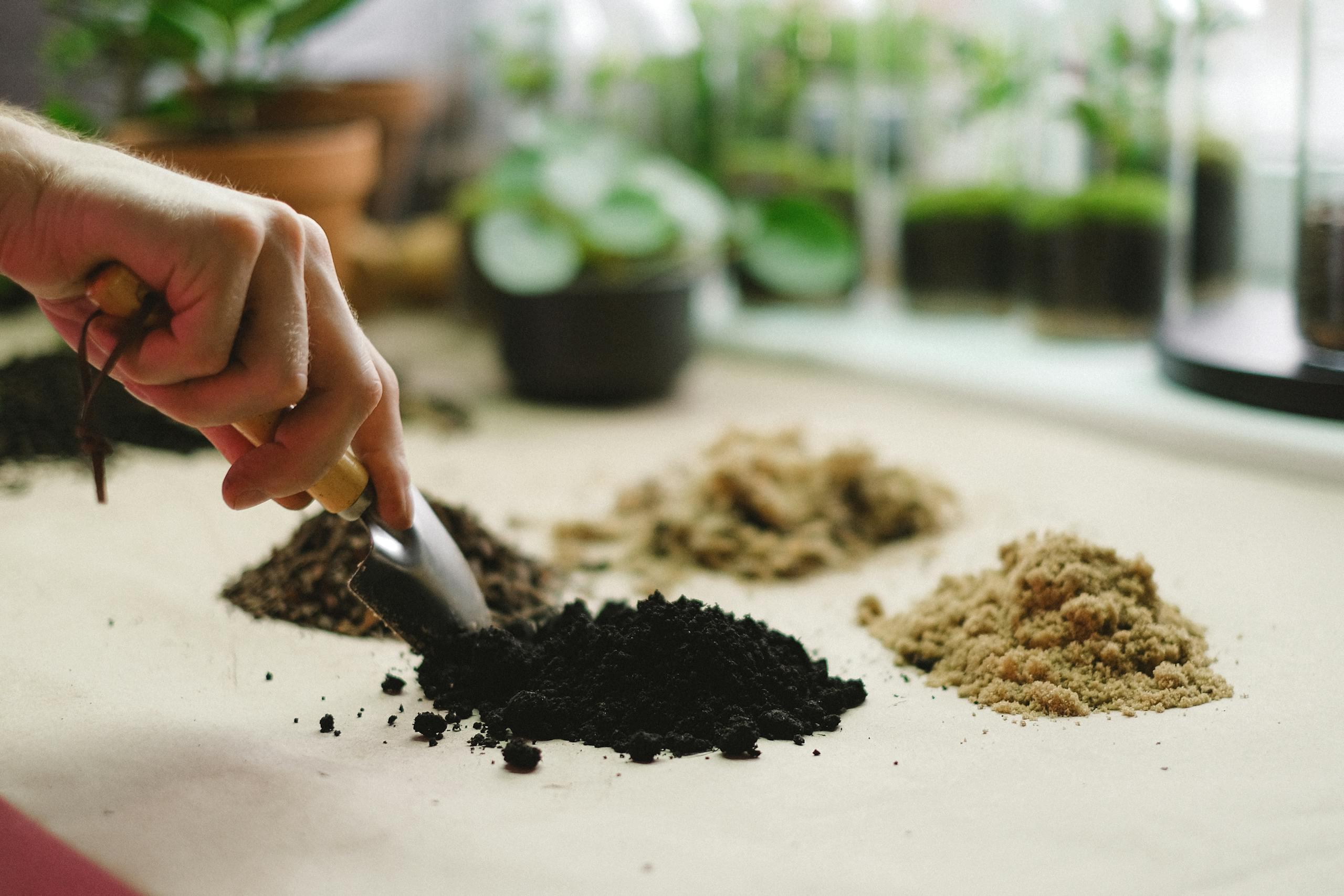Compost Additives
These compost additives can really help If you feel like your compost pile always looks the same—banana peels, lawn clippings, the odd wilted lettuce leaf—you’re not alone.
But there’s fun in trying Compost Ingredients You Probably Aren’t Using Yet! Some of the best compost additives are hiding in plain sight, ready to shake up your pile and deliver big results for your garden.
Let’s take a look at a few unusual but handy helpers that will liven up your compost, plus simple ways to test new items in a safe, smart way.
Unusual Additives That Boost Compost Quality
Sometimes, the secret to better compost is right under your nose—or maybe under your sofa.
Here are a few Compost Ingredients You Probably Aren’t Using Yet that can add nutrients, help structure, and get your compost cooking faster:
- Human and pet hair: Clean hair (no chemical dyes or styling products, please) is rich in nitrogen. Hair decomposes slowly but keeps soil healthy. Think of it as giving your garden a haircut.
- Wool scraps: Small, untreated wool trimmings work like hair. They gently feed microbes, and their fiber even helps “fluff” the pile for more air.
- Biochar: This is charcoal made from plant matter, and it boosts compost structure. Biochar soaks up moisture, making your compost less soggy and helping good bacteria thrive. If compost is a party, biochar is the guest who keeps things lively but never spills their drink.
- Seaweed: If you live near the coast, a little rinsed seaweed is high in trace minerals. Just wash away the salt before tossing it in.
- Shredded cardboard and paper: Cardboard is a carbon-rich brown that balances food scraps and keeps odors in check. There’s a full guide for composting cardboard and paper that makes the process easy.
- Eggshells: Dry, crushed eggshells add calcium and help prevent acidic build-up. Chickens might not compost eggshells, but your plants will sure thank you.

Each of these compost additives brings something different to the table.
Hair and wool add nutrients, eggshells help balance pH, and cardboard keeps your pile from becoming a mushy mess.
The next time you clean your hairbrush or break down an old box, remember: your compost wants in on the action!
You can find even more surprising compost ideas in this list of unusual compost ingredients that includes everything from nail clippings to fireplace ashes.
Who knew cleaning out your pockets could feed your garden?
How to Safely Experiment With New Ingredients
Trying Compost Ingredients You Probably Aren’t Using Yet is all about balance and observation.
A touch of creativity goes a long way, but you don’t want your bin to become a science experiment that runs wild.
Here’s how to add new materials without woes:
- Start small: Only add a handful of your new ingredient at first. This gives you a chance to spot any problems before they get big.
- Mix it up: Blend new materials with your usual kitchen or garden scraps. Too much of one thing—especially tough items like hair or wool—can slow things down.
- Check for pests: Strong odors or surprise visits from bugs mean your mix needs a tweak. If you ever worry, a quick visit to the Compost FAQ can help you solve nearly any compost saga.
- Watch for smells: A healthy compost, whether in a compost tumbler or a classic pile, should smell earthy—not sour or rotten. A bad smell means your pile might need more browns, like dry shredded cardboard or fallen leaves.
Shredded paper and cardboard deserve a special shout-out here. They’re easy to find, balance moisture, and keep your pile in good shape.
Curious about best methods and safety? The in-depth guide to composting cardboard and paper takes you right through the process.
Trying new compost additives can be as simple as adding a sprinkle of hair with your coffee grounds or some crushed eggshells from breakfast.
Test it out, keep an eye on the results, and enjoy the process. Composting is a bit like cooking—sometimes the best recipes start by adding something unexpected.
For more great ideas and guidance, check out helpful tips on compost ingredients and experiments for beginners, which keeps things simple and fun.
Key takeaways:
- A handful of unusual compost additives can make a big difference—hair, wool, seaweed, biochar, and eggshells all bring unique nutrients or structure.
- Always start small and monitor the results when testing new ingredients in your compost tumbler, bin, or heap.
- Shredded cardboard and paper are excellent companions for your pile, keeping moisture and odors in balance.
- Mixing and matching ingredients keeps composting safe and fun—your pile will happily reward a bit of creativity!
 Photo by Kaboompics.com
Photo by Kaboompics.com
Getting the Most From Your Compost Additives
Compost additives are the secret superheroes of a thriving bin or pile. Whether you compost with a tumbler, a worm bin, or an old-fashioned heap, layering the right boosts at the right time changes everything.
A quick adjustment can turn a lazy pile into nutrient-rich compost that smells sweet and feels crumbly—no more mystery sludge or composting “oops” moments.
Here’s how to tailor your approach for different composting methods and handle any trouble that pops up along the way.
Tailoring Additives to Your Composting Method
Not all compost bins are created equal.
How you compost—tumbler, worm bin (vermicomposting), or classic pile—changes what your additives need to do.
For Compost Tumblers:
- Compost tumblers work fast but need balance. Add soft greens (like grass clippings), plus brown materials (cardboard or leaves) with every turn. If things seem slow, try mixing in a handful of coffee grounds or some crushed eggshells.
- Make sure you’re turning the tumbler every few days to mix additives and keep oxygen flowing. You’ll know you’re getting it right when the compost heats up and cools without any stink.
For Worm Bins (Vermicomposting):
- Worms love soft, moist scraps and avoid citrus and onion peels. Add eggshells or a sprinkle of garden soil to balance pH and give worms grit for digestion.
- Include shredded paper or coco coir to keep the bin airy. If you notice fruity smells or bugs, slow down on food scraps and add more “browns” to dry things out.
- Healthy worm compost should look like coffee grounds and smell earthy.
For Traditional Compost Piles:
- Layer greens and browns for even breakdown. Beyond basics, try Compost Ingredients You Probably Aren’t Using Yet, like clean hair, seaweed, or biochar to see changes in texture and nutrition.
- Occasionally mix in a shovel of finished compost to up the microbe count. A compost pile that’s thriving will shrink in size, smell good, and clump together when squeezed—never soggy, never dry.
If you’re curious how small changes affect your pile’s temperature or want to tweak for speed, you might enjoy some hands-on compost thermometer insights.
Signs You’re on the Right Track:
- Sweet, earthy scent: Like forest soil, not vinegar or trash.
- Crumbly texture: Feels like chocolate cake, never sludge.
- Minimal pests: Compost stays inside the bin—flies and bugs don’t throw parties.
Using specialty compost additives or Compost Ingredients You Probably Aren’t Using Yet?
Start with just a little, mix well, and observe.
Each method needs its own rhythm, but the right tweak at the right time pays off with better compost for your plants.
Troubleshooting: Fixing Common Problems With Additives
Even with the best compost additives, sometimes things get funky. Soggy, slow, or smelly compost is common, but a quick adjustment keeps the cycle rolling.
Use this quick-reference table and handy tips to get your bin back in shape.
| Problem | Likely Cause | Simple Fix with Additives |
|---|---|---|
| Bad smell (like rot) | Too many greens, not enough browns; too wet | Add shredded paper, cardboard, or dry leaves. Mix well. Hold off on wet scraps. |
| Soggy pile | Poor drainage, excess moisture | Boost carbon with straw, sawdust, or more cardboard. Turn more often. |
| Dry, slow compost | Not enough greens, dry weather | Add coffee grounds, grass clippings, or kitchen scraps. Lightly water if needed. |
| Pests/flies | Uncovered food, sweet fruit or bread | Bury new scraps under 10cm of browns. Skip meat, dairy, or oily foods. |
| Worm bin smells sour | Too much food, wrong scraps | Remove excess scraps, add more bedding. Stick to safe worm foods. |
Quick Tips for Fast Recovery:
- Change only one thing at a time—additives or mixing—then monitor for a week.
- Compost thrives with patience; if you corrected an imbalance, give it a little time before expecting a full turnaround.
- Whenever you’re unsure if it’s time to turn, see these mixing compost tips.
Balanced composting is a simple dance: greens, browns, and air take the lead, while special additives or Compost Ingredients You Probably Aren’t Using Yet provide a boost if things feel off.
Remember every pile has its personality—small, steady tweaks work better than big, sudden changes.
If you find yourself stumped, don’t toss in the trowel.
Resources like guides to 6 effective composting methods can offer even more ideas suited to your unique method, helping everyone from beginners to advanced home composters find their perfect blend.
Key takeaways:
- Tailor compost additives to your compost bin, tumbler, or vermicomposting setup for better results.
- Signs of composting success include a crumbly feel, earthy smell, and fewer pests.
- Simple fixes like balancing greens and browns or using new Compost Ingredients You Probably Aren’t Using Yet solve most common problems.
- Patience, observation, and steady adjustments make the difference between so-so and stellar compost.
Summary: Compost Additives Made Simple
Compost additives play a quiet but crucial role in how successful your compost really turns out.
They’re not just fancy extras—they’re small helpers that boost nutrient content, balance moisture, and speed up the breakdown of tough materials.
Whether you compost with a classic pile, vermicomposting bin, or a handy compost tumbler, learning the basics makes the whole process less confusing and much easier to manage.
Still curious about those surprising Compost Ingredients You Probably Aren’t Using Yet?
Read on for easy ways to upgrade your homemade compost.

What Are Compost Additives?
Compost additives are ingredients you add on purpose to help your pile or bin break down quicker and more evenly.
Some are simple and inexpensive, like crushed eggshells or old coffee grounds. Others are store-bought mixes that promise to “activate” your pile.
No matter the type, the goal is the same: healthier compost with less hassle.
If you haven’t tried using materials outside the basics, this is where Compost Ingredients You Probably Aren’t Using Yet shine.
For example, many people never add human hair, untreated wool, or even seaweed, even though they can make a surprising difference in both compost speed and results.
Here’s how these handy additions work their magic:
- Improve nutrient levels so finished compost feeds your plants better.
- Balance the mix if your compost is too wet, too dry, or just smells a little “off.”
- Give important microbes and earthworms what they need to do their job fast.
For anyone looking to boost their composting game, the secrets lie in both the obvious scraps and those less-used, creative options.
If you’re working with cooked foods, certain ingredients can help with balance.
For instance, tips for composting cooked food highlight which additives help avoid odors and pests.
What Additives Work Well in Different Composting Systems
Not every compost setup needs the same approach.
Here’s how different methods benefit from the right additives:
- Compost Tumbler: Needs a steady balance of soft “greens” and dry “browns”. Additives like coffee grounds or biochar keep the process working smoothly and prevent sogginess.
- Vermicomposting: Worms need small, soft scraps and benefit from crushed eggshells. Avoid too many spicy, acidic, or oily additives.
- Classic Compost Heap: Can handle more variety. Test Compost Ingredients You Probably Aren’t Using Yet, like shredded cardboard, sawdust, or even a little seaweed if you live near the coast.
Each method is boosted by different additives, so don’t be afraid to mix it up. Your compost will thrive when you match the right helper to your style.
Easy Ways to Experiment With Compost Ingredients You Probably Aren’t Using Yet
Trying new compost additives doesn’t have to be risky. Start with a small amount and mix it into your pile—like testing a secret ingredient in a favorite recipe.
Nothing drastic—just small, safe adjustments.
Here’s a quick guide:
- Add one new ingredient at a time.
- Monitor smells and texture for any changes.
- Use common sense and avoid anything greasy, treated with chemicals, or likely to attract pests.
If you’re curious about manure as a natural additive, the page explaining What is compost manure? breaks down how animal waste transforms piles and gives specific advice for beginners.
Key Takeaways
- Compost additives help your pile decompose faster, smell better, and become more nutrient-rich.
- You don’t need expensive products—often, the best results come from simple, overlooked household items.
- Trying Compost Ingredients You Probably Aren’t Using Yet keeps composting fresh, fun, and effective.
- Pick your additives to fit the type of composting you do—regular pile, vermicomposting, or compost tumbler—for the best results.
- Always start with small amounts and watch how your compost reacts before adding more.
Upgrading your compost with the right additives can be as simple as a sprinkle of coffee grounds, a handful of cardboard, or even a little seaweed from the beach.
Give it a try—and see how quickly your compost turns from basic to brilliant!
Conclusion
Compost additives can quickly turn an average compost heap into a thriving, nutrient factory for your garden.
Even a small change like adding eggshells or trying Compost Ingredients You Probably Aren’t Using Yet—such as biochar or seaweed—can help your compost mature faster, smell better, and provide richer soil for your plants.
These helpers work in every system, from vermicomposting bins to compost tumblers.
If you ever run into odd smells, slow breakdown, or mystery pests, a simple tweak with your additives or balance of greens and browns usually brings things back on track.
For more troubleshooting tips, use the handy Ask a Question tool or explore in-depth guides on how to make compost at home from kitchen waste.
Composting is a journey—bring along your curiosity and a playful spirit.
Ready to try something new?
Test a handful of Compost Ingredients You Probably Aren’t Using Yet and enjoy the difference in your next garden season.
Happy composting!
Key Takeaways
- Compost additives help create richer, faster, and better-smelling compost.
- Everyone can try new ingredients, from eggshells to seaweed, to help their pile thrive.
- Most composting problems (slow, smelly, or pest-prone piles) can be solved by adjusting your additives.
- Composting fits into any home setup—compost tumbler, worm bin, or heap.
- Explore more guides like How to Make Compost Tea to keep learning and growing your garden’s potential.
FAQ: Compost Additives and Home Composting
What are compost additives and why should I use them?
Compost additives are extras you add to your pile to help it break down faster and become richer. They balance wet and dry materials, boost nutrients, and can stop bad smells.
Which additives work best for compost tumblers or worm bins?
For a compost tumbler, try mixing coffee grounds, dry leaves, and eggshells. In worm bins (vermicomposting), worms enjoy soft scraps and crushed eggshells. Stick with additive ideas that match your bin style.
Can I use pet hair, wool, or seaweed as compost additives?
Yes! Clean pet hair, untreated wool, and rinsed seaweed add nutrients and improve your compost structure. Start with small amounts, then watch how your pile reacts.
How can I fix a smelly or slow compost pile?
Add more dry “browns” like cardboard or leaves, and cut back on wet food scraps. For odor help or pest control, check managing fruit flies in compost or use the Ask a Question tool for instant tips.
What’s one simple step to start composting at home?
Begin by collecting kitchen scraps and mixing them with dry materials such as cardboard or shredded paper. Try adding new Compost Ingredients You Probably Aren’t Using Yet to see what works best for you.
Thank you for learning and experimenting with compost additives!
If you have more questions or want to explore next steps, visit resources like making compost at home or try out how to make compost tea. Your compost—and the planet—will thank you.






